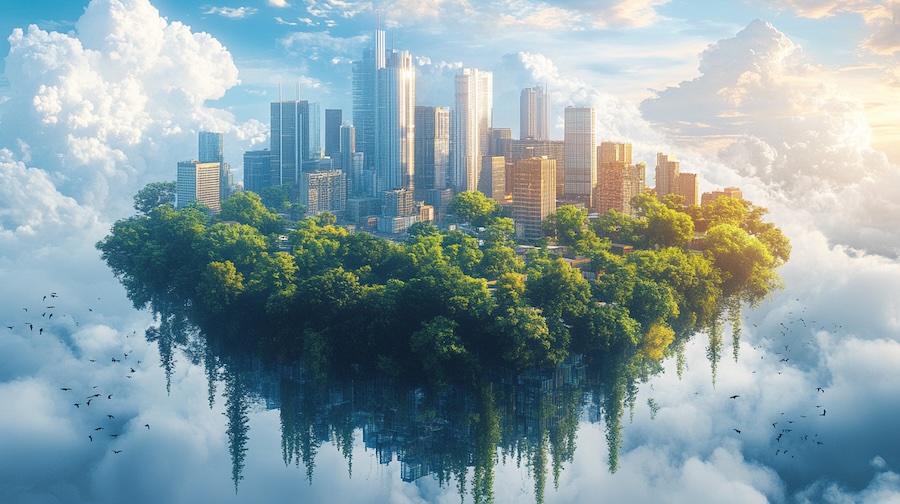The Green Cities consortium developed the blog post “Urban Design Principles: Essential Concepts for Effective Planning” under the EU-Funded Project Youth Participation for Developing Sustainable Green Cities (reference number: 2022-1-DE04-KA220-YOU-000085135). L4Y Learning for Youth GmbH is leading the project alongside partners Citizens in Power, Toplum Gönüllüleri Vakfı, Kean, Walktogether, and Kaán Károly Környezetvédelmi Egyesület.
This blogpost is based on the training content developed for the Green Cities project. For more content like this, click here. If you would like learn more about the topic, we suggest enrolling in our free online training course. In the platform, you will also find the full list of references and extra suggested reading material.
To keep up to date, follow our YouTube Channel, as well as our X and Instagram social media pages.
Introduction
Urban design shapes and organizes cities to create functional, attractive, and sustainable environments. It arranges buildings, public spaces, transportation systems, and infrastructure to enhance residents’ quality of life. Moreover, urban design addresses rapid urbanization and climate change, aiming to create resilient, inclusive, and livable cities.
Understanding Urban Design
Urban design involves planning urban spaces to create livable, attractive, and sustainable environments. It strategically arranges buildings, streets, public areas, and infrastructure, considering social, economic, and environmental aspects. Consequently, the primary objectives include promoting pedestrian-friendly environments, enhancing connectivity, fostering mixed land uses, incorporating green spaces, celebrating cultural heritage, and facilitating economic development. Collaboration among various professionals and stakeholders is essential.
The concept dates back to ancient civilizations, where intentional city planning created organized urban spaces. However, urban design gained prominence in the 20th century, responding to rapid urbanization challenges. Modern movements like Garden City and City Beautiful influenced its development, addressing issues like congestion, sprawl, and environmental degradation. Notable figures like Ebenezer Howard and Le Corbusier significantly shaped urban design principles.
Key Principles of Urban Design
- Human Scale: Design spaces for pedestrian comfort, promoting walkability and social interaction.
- Connectivity: Establish well-connected networks of streets, pathways, and public transit.
- Mixed Land Uses: Encourage a diverse mix of residential, commercial, cultural, and recreational activities.
- Green Spaces and Sustainability: Incorporate green infrastructure, parks, and sustainable practices.
- Cultural Heritage and Social Inclusivity: Celebrate cultural diversity and preserve historic landmarks.
- Economic Viability: Support economic growth through strategic urban interventions.
Benefits and Challenges Urban Design
Urban design principles offer many benefits. For instance, improved quality of life comes from human-scale design and green spaces. Enhanced connectivity facilitates efficient movement and reduces congestion. Furthermore, vibrant communities emerge from mixed land uses. Sustainability mitigates environmental impact and promotes resilience. Moreover, cultural and social inclusion celebrates heritage and fosters cohesion. Lastly, economic growth is supported by strategic urban design.
However, implementing these principles presents challenges. Firstly, high initial costs are required for infrastructure and sustainable design elements. Additionally, stakeholder collaboration can be complex. Balancing diverse interests within urban communities is also challenging. Ensuring inclusivity and accessibility is crucial.
Successful Implementations Following Urban Design Principles
- Copenhagen, Denmark: Pedestrian-friendly streets, bicycle networks, and green spaces improve life quality and connectivity.
- Curitiba, Brazil: An integrated public transportation system and green infrastructure foster vibrant communities and sustainability.
- Barcelona, Spain: The Superblocks concept and green corridors reduce traffic congestion and enhance public spaces.
Conclusion
In conclusion, urban design principles are essential for creating sustainable, efficient, and livable urban environments. By integrating advanced technologies, sustainable practices, and innovative strategies, cities can enhance residents’ quality of life. Consequently, the evolution of urban design shapes future cities, fostering resilience, inclusivity, and vibrancy. As more cities adopt these principles, creating dynamic and sustainable urban environments becomes increasingly attainable. Therefore, embracing these urban design principles is crucial for the future of effective urban planning.













